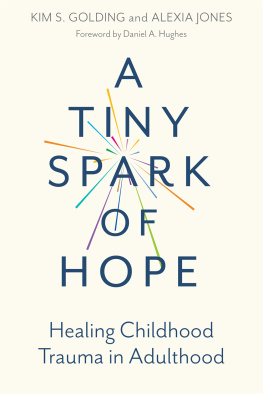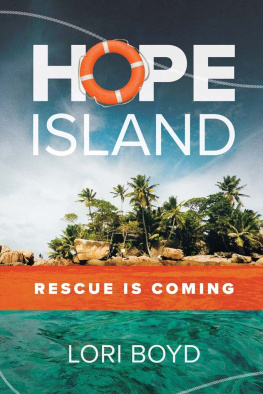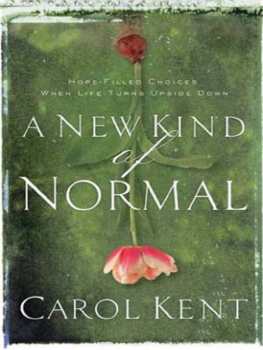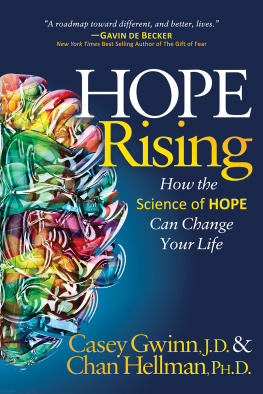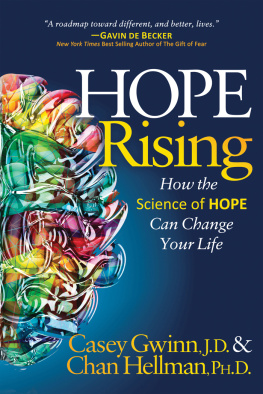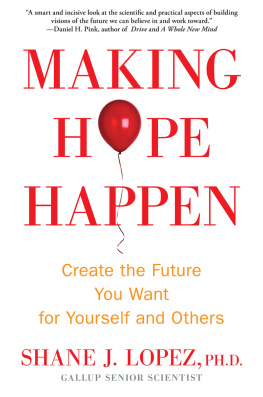ARRESTING HOPE
Copyright 2014 Inanna Publications and Education Inc.
Individual copyright to their work is retained by the authors. All rights reserved. No part of this book may be reproduced or transmitted in any form or by any means, electronically or mechanically, including photocopying, recording, or any information or storage retrieval system, without prior permission in writing from the publisher.
Published in Canada by
Inanna Publications and Education Inc.
210 Founders College, York University
4700 Keele Street, Toronto, Ontario M3J 1P3
Telephone: (416) 736-5356 Fax (416) 736-5765
Email: inanna.publications@inanna.ca Website: www.inanna.ca
The publisher gratefully acknowledges the support of the Canada Council
for the Arts and the Ontario Arts Council for its publishing program. We also acknowlege the financial assistance of the Government of Canada through the Canada Book Fund,
Note from the publisher : Care has been taken to trace the ownership of copyright material used in this book. The authors and the publisher welcome any information enabling them to rectify any references or credits in subsequent editions.
Cover artwork: Mo Korchinski
Cover design: Val Fullard
eBook development: WildElement.ca
Library and Archives Canada Cataloguing in Publication
Arresting hope : women taking action in prison health inside out / Ruth Elwood Martin, Mo Korchinski, Lynn Fels & Carl Leggo, editors.
Issued in print and electronic formats.
isbn 978-1-77133-158-6 (pbk.). isbn 978-1-77133-161-6 (pdf).
isbn 978-1-77133-159-3 (epub)
1. Alouette Correctional Centre for WomenBiography. 2. Hope.
I. Martin, Ruth Elwood, 1954, editor II. Korchinski, Mo, 1966, editor
III. Fels, Lynn, 1955, editor IV. Leggo, Carl, 1953, editor V. Title.
HV9509.B72A58 2014 365.4309711 C2014-905743-1
C2014-905744-X
Printed and Bound in Canada.
ARRESTING HOPE
Women Taking Action in Prison Health Inside Out
edited by
RUTH ELWOOD MARTIN, MO KORCHINSKI, LYNN FELS AND CARL LEGGO
INANNA Publications and Education Inc.
Toronto, Canada
For all the women still stuck in the revolving door,
the women who have passed away, and the
women who continue to fight the demons of addiction
or bear the burden of trauma and loss.
For the women who have unlocked the gate
and are living lives filled with
hope, possibility, and accomplishment.
Table of Contents
Acknowledgements
This book would not have been written without the support and dedication of a great many people. We heartily thank the expansive community of people who contributed to this work.
Firstly, we acknowledge the women whose words within these pages speak to their experiences, and all the women who were in this prison between 20042007.
Secondly, we acknowledge all those who have worked towards a new understanding of community behind the gates: recognizing women, their stories, and the hope that refused to be arrested. To warden Brenda Tole for creating the vision, and to the deputy wardens who supported her vision; to Alison Granger-Brown for her courage and energy and commitment to time and hope; to Lara-Lisa Condello, to Linnea Groom and the W workers (and their rent a friend program); to Aboriginal Elder Holy Cow (Mary Fayant), prison Chaplain Henk Smidstra, and to the guards, contractors, staff, and community agency volunteers who brought their talents, expertise, compassion, and commitment through the gates. In addition, representatives of numerous community organizations attended the prison participatory research forums as guests (see complete list at www.womenin2healing.org/research-projects ). Their presence and support provided invaluable affirmation for the womens research work.
Thirdly, we acknowledge the organizations that have funded this work. The Vancouver Foundation supported and believed in this project over the years, and provided an operating grant from the British Columbia Medical Services Fund ( BCMSF ) entitled Community-based Participatory Action Research: Collaborating with Women in Prison to Improve Their Health (2007); an operating grant entitled, Community-based Participatory Action Research: Women in2 Healing, Women Who Were Incarcerated (2008); a BCMSF salary award for Dr. Ruth Elwood Martin entitled, Community-based Clinical Investigator with the University of British Columbia Department of Family Practice (20072012); and a BCMSF community engagement grant for Book Proposal, Prisons that Heal (2010). In addition, the Fraser Health Authority and the Tula Foundation supported this project with operating funds entitled Participatory Action Research: Women in2 Healing, Women Who Were Incarcerated (2008). We also acknowledge the many other organizations and individuals who donated funds to the participatory research activities of Women in2 Healing so that incarcerated women can take educational courses, present their work at conferences, host networking events for women with previous incarceration experience, and support venues for women who exit from prison. A complete list of publications and presentations arising from the participatory research project is available on-line at What Weve Done ( www.womenin2healing.org/whatdone ).
Fourthly, we thank the Nicola Valley Institute of Technology ( NVIT ) for their support. In particular, we acknowledge NVIT for hosting monthly support meetings of Women in2 Healing and the writing workshops that spurred the writings in this book. In addition, we are indebted to the University of British Columbia Department of Family Practice and the Womens Health Research Institute, BC Womens Hospital, and the Provincial Health Services Authority for providing practical support such as office space, fiscal hosting, and human resources and administrative support.
Finally, we acknowledge the assistance of Daniel Martin, Gerda Wever, Rebecca James, Lindi Lewis, and Stanley Martin in formatting, editing, designing, and proofreading the various versions of the manuscript and bibliography. Ruths book group members provided invaluable support with their affirmations following their reading of the first draft. And, we thank Luciana Ricciutelli, Editor-in-Chief of Inanna Publications, for her faith in the manuscript, her expertise, and her thoughtful oversight of the publication of Arresting Hope.
Preface
T HIS BOOK IS NOT THE RESULT of a solitary prison doctor seeking to improve prison health for women. Rather, this book is born out of a participatory and collaborative process bearing witness to health and healing inside the Alouette Correctional Centre for Women ( ACCW ).
Womens lives were transformed as a result of participatory processes adopted by the prison warden and prison managers who sought to create a therapeutic environment. As incarcerated women were offered, and assumed, increasing responsibility for all aspects of their lives, so they developed skills and capacities, and they became mentally, physically, and socially healthier. The narratives in this book illuminate a prison community seeking and attaining well-being and highlight the elements of a successful prison.




